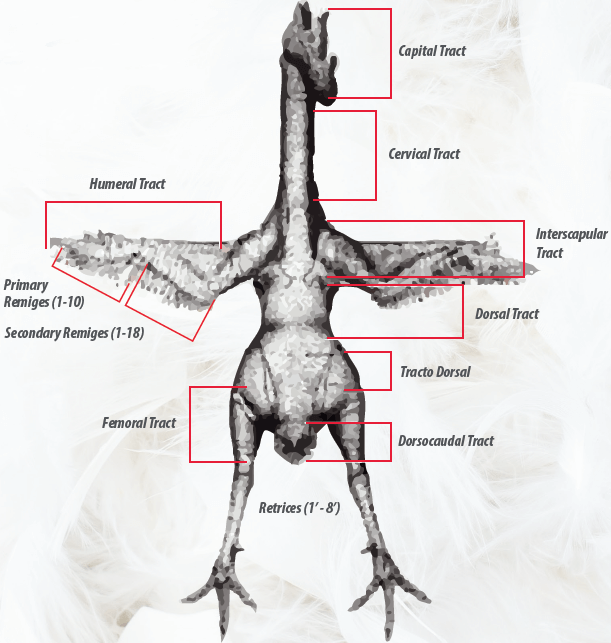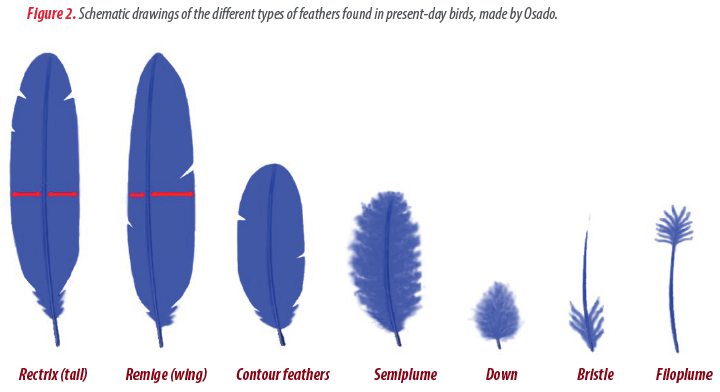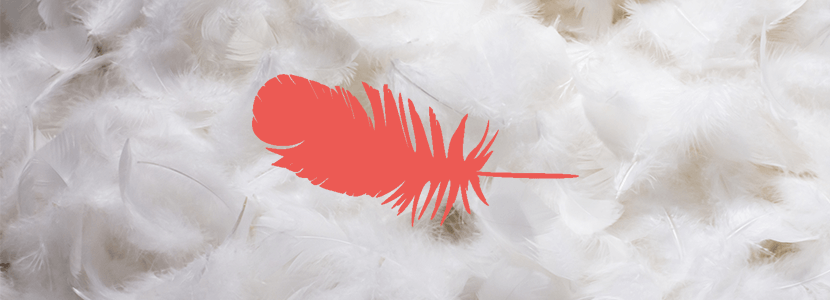Content available at: Español (Spanish)
Feathers are a fundamental body part for birds, with varying functions such as protection, insulation, sexual display, and flight.
In broiler breeder hens, feathering is essential to achieve optimal production and a correct degree of welfare.
Plumage, particularly in the dorsal area, is important for the female’s willingness to mate.
When coverage is insufficient, a drop in infertility can be observed, usually in the second half of the production cycle.
This article aims to review the factors affecting feather integrity by examining its biology, development and composition.
FEATHER BIOLOGY
Feather structures
Feathers cover approximately 75% of a hen’s body. They are distributed between 20 to 30 defined growth areas, known as feather tracts (or pterylae) and form between 6,000 to 9,000 feathers.

Figure 1. Dorsal view of the feather tracts.
Non-feathered areas of the skin (apteria) are found under the wings, keel, and the central portion of the chest.
The different types of feathers are classified into five categories:
- The large, stiff feathers of the wings (remiges) and tail (retrices)
- Contour feathers
- The downs or plumules
- The hair-like filoplumes
- Tiny bristles on the face (a category called semi-feathers that can be included between contour feathers and downs)

Remiges and retrices are large, stiff feathers characterized by asymmetrical blades.
Contour feathers are the main protective outer covering of the entire body.
The downs are the ones present at birth (natal down) or those found in the apteria of gallinaceous birds (definitive down). In adult birds, they are distributed in such a way as to serve as insulators.
Filoplumes are located throughout the body, mostly between the contour feathers of the back and the head. They are difficult to see and their function is ornamental sensory.

PLUMAGE GROWTH AND DEVELOPMENT
The periodic replacement of all, or part of the plumage, is known as molting. During a molt, the feather follicle enters a period of growth known as anagen and the newly growing feather “pushes out” the existing feather.
Molting occurs during development, as plumage changes from natal down to maturity, and also seasonally. Feathers are replaced three times. At any age, more than one generation of feathers will appear in a tract and the variation within a group of birds is very complex. Before reaching maturity, a chick loses and develops permanent feathers somewhere on the body.
The sequence of molts in broiler breeder hens with a controlled feeding regimen has not been described in detail. However, there is a study (Lucas and Stettenheim, 1972) in which the molting sequence of the different body tracts and primary remiges of Simple Crested White Leghorn (SCWL) chickens is shown.
Keep up to date with our newsletters
Receive the magazine for free in digital version
REGISTRATION
ACCESS
YOUR ACCOUNT
LOGIN
Lost your password?










